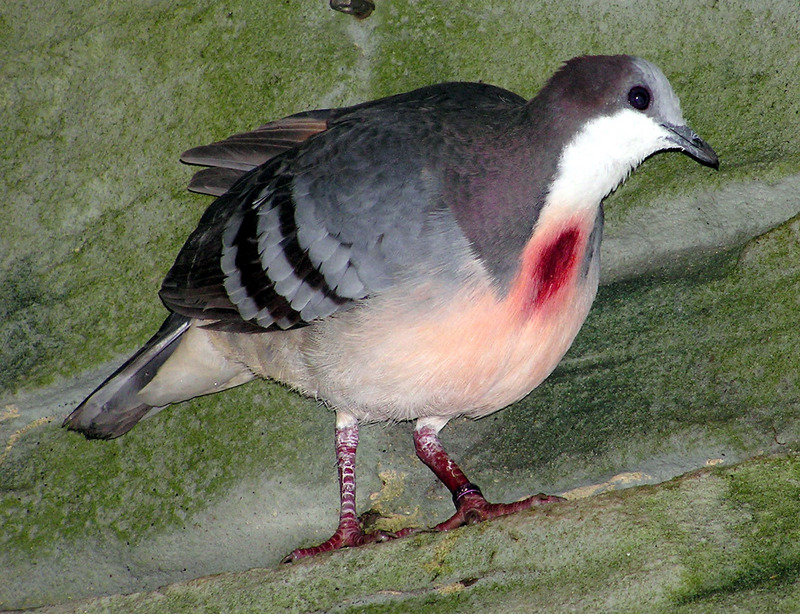|
| Query: gallicolumba luzonica | Result: 4th of 12 | |
Luzon Bleeding-heart Dove (Gallicolumba luzonica) - Wiki
| Subject: | Luzon Bleeding-heart Dove (Gallicolumba luzonica) - Wiki
| |

| Resolution: 1800x1381
File Size: 674211 Bytes
Date: 2005:02:17 14:32:24
Camera: C750UZ (OLYMPUS CORPORATION)
F number: f/3.5
Exposure: 10/3200 sec
Focal Length: 571/10
Upload Date: 2007:10:29 15:19:39
|
Luzon Bleeding-heart
From Wikipedia, the free encyclopedia
[Photo] Luzon Bleeding-heart Dove (Gallicolumba luzonica) in the Wallace Aviary at Bristol Zoo, Bristol, England. Photographed by Adrian Pingstone (http://commons.wikimedia.org/wiki/User:Arpingstone) in February 2005 and released to the public domain.
The Luzon Bleeding-heart (Gallicolumba luzonica) is one of a number of species of ground dove in the genus Gallicolumba that are called "bleeding-hearts". They get this name from a splash of vivid red colour at the centre of their white breasts. The Luzon Bleeding-heart is the species in which this feature is most pronounced, and on first sight it is hard to believe that the bird has not recently been wounded. This is also partially due to a reddish hue extending down the belly, providing the illusion of blood having run down the bird's front.
On its upper surfaces, the Luzon Bleeding-heart is slate grey in colour, but because it is iridescent, it can appear to be purple, royal blue, or bottle-green, and the apparent colour varies with lighting conditions. The belly and under wing areas are buff or chestnut. As in most pigeons, there is little sexual dimorphism; males tend to be larger and have a more pronounced red patch, and some authorities claim that the female has a purplish iris, though others dispute this. Body shape is typical of the genus, with a round body, a short tail and long legs.
The species is endemic to the central and southern parts of the large island of Luzon, and the neighbouring small Polillo Islands, in the Philippines. It lives in primary or secondary forest, and can be found at altitudes varying from sea level up to 1400 metres. They eat seeds, berries and grubs. They are shy and secretive, and very quiet, and rarely leave the ground except when nesting. Unlike the other bleeding-hearts, they usually lay two eggs in each clutch.
Although not formally regarded as endangered, the Luzon Bleeding-heart is under some threat, since it is commonly trapped. Local people use it for meat, but its striking appearance means that there is also a market for it in the pet trade. A captive breeding project has been started in Australia.
The Luzon Bleeding-heart was featured on a Philippine 2-peso postage stamp in 1994.
http://en.wikipedia.org/wiki/Luzon_Bleeding-heart
| The text in this page is based on the copyrighted Wikipedia article shown in above URL. It is used under the GNU Free Documentation License. You may redistribute it, verbatim or modified, providing that you comply with the terms of the GFDL. |
|
Comments |
|---|
| | sheri Friis |
|
My husband and I are retiring in Missouri. We would like to raise bleeding heart and white doves. Do you have a contact to purchase? Thanks.
Sheri Friis |
 |

|

|
gallicolumba luzonica
4/12 |

|
 |
^o^
Animal Pictures Archive for smart phones
^o^
|
|
|

